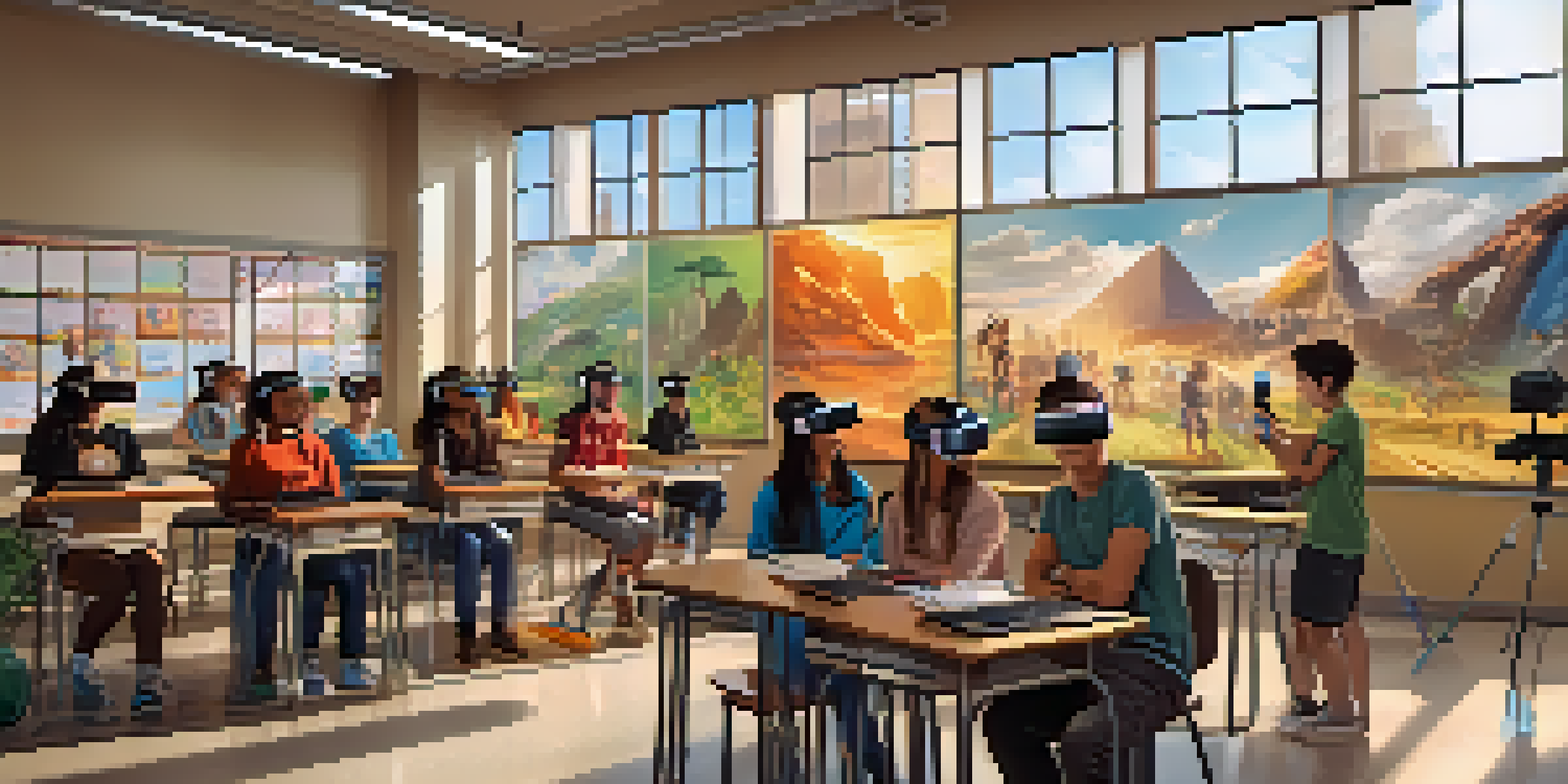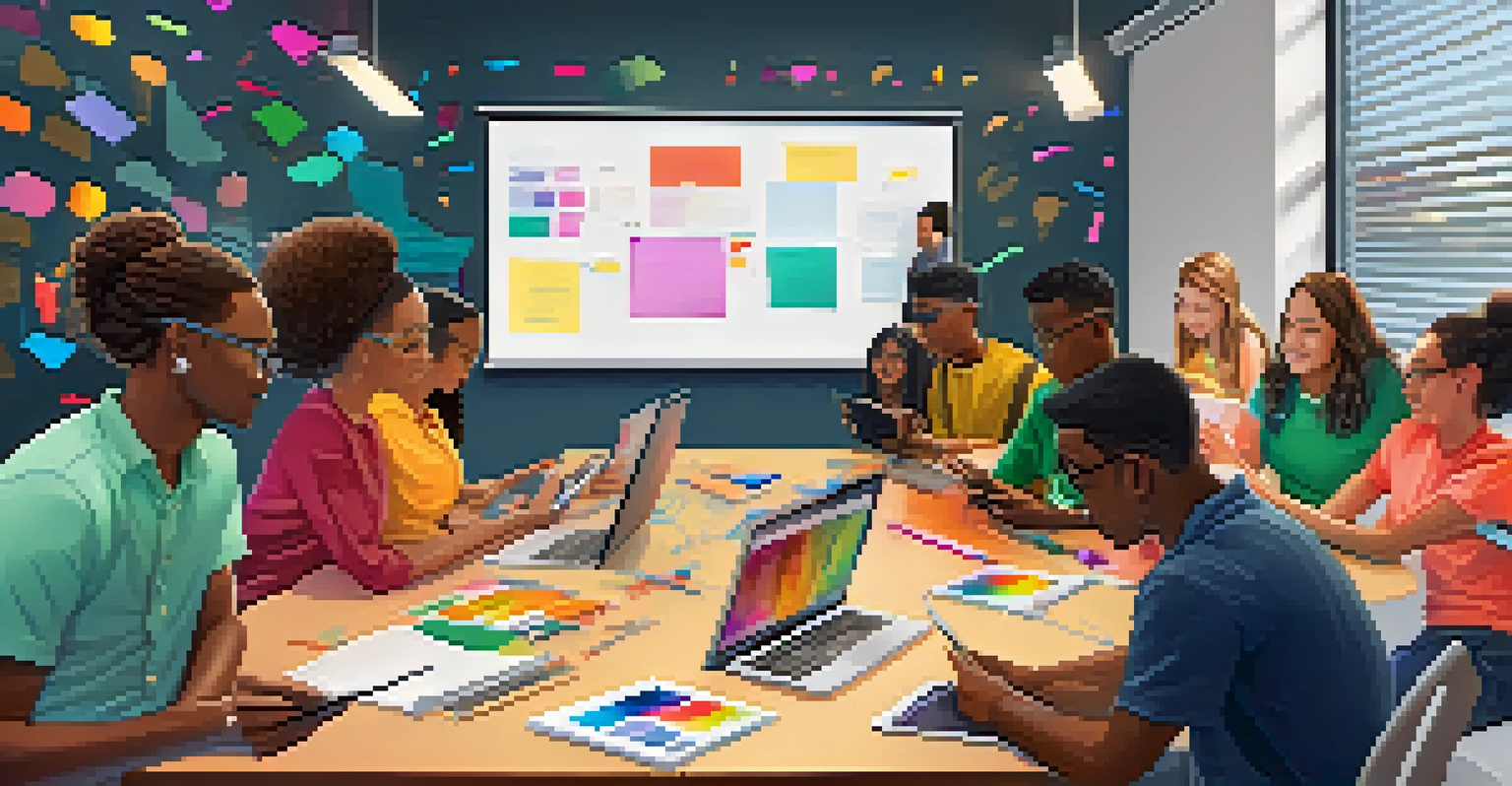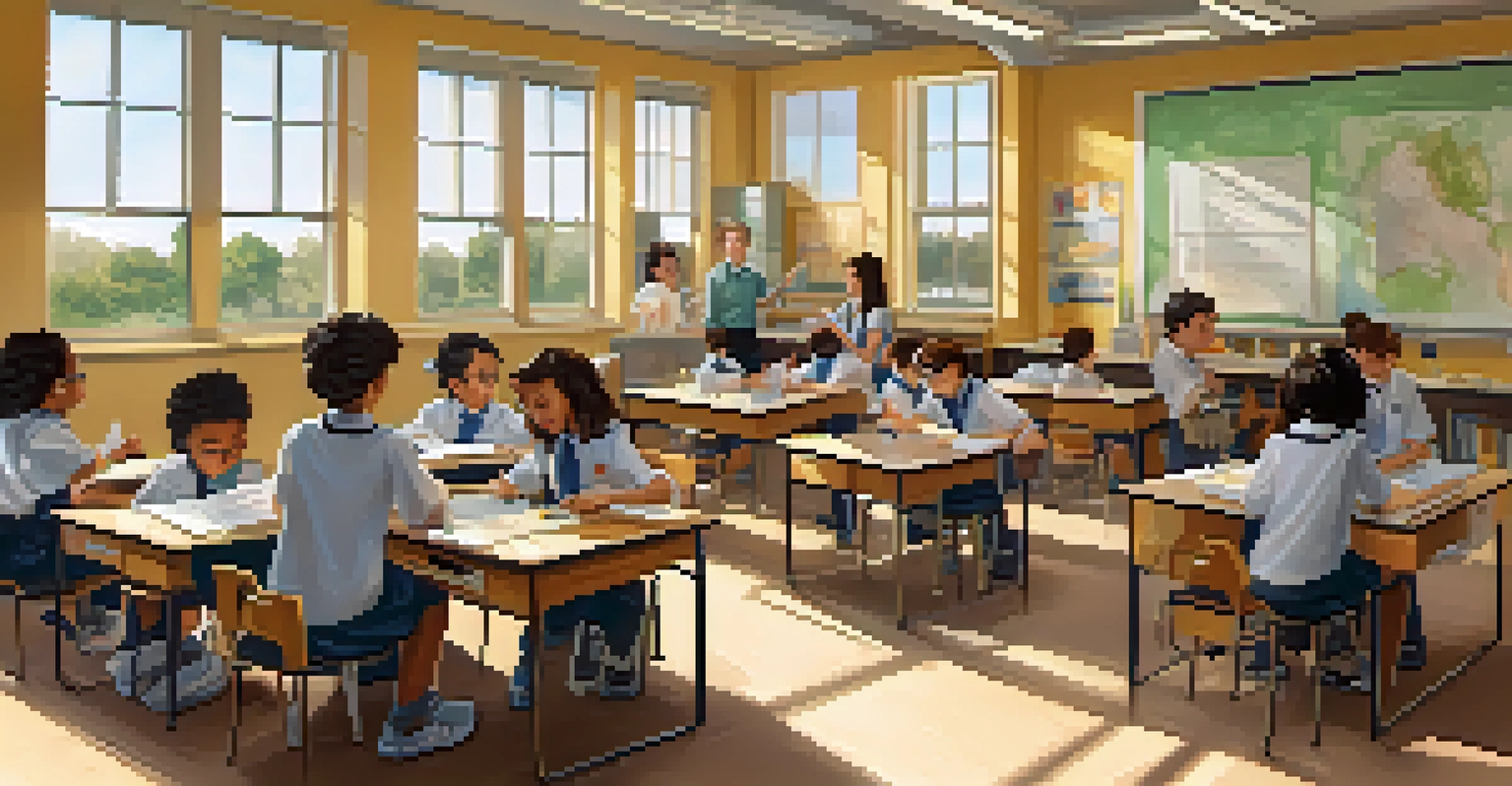Educational Technology Trends in Minneapolis Classrooms

Integration of Virtual Reality in Learning Experiences
Virtual reality (VR) is making its way into Minneapolis classrooms, providing students with immersive learning experiences. Imagine a history lesson where students can virtually walk through ancient civilizations or explore the human body from the inside out. This technology not only captivates students' attention but also enhances their understanding of complex subjects. As educators embrace VR, they are witnessing increased engagement and retention of information among students.
Education is not the filling of a pail, but the lighting of a fire.
Schools like South High have started incorporating VR into their science and history curricula. This hands-on approach allows students to experience lessons in a way that textbooks simply cannot offer. For instance, biology students can explore ecosystems in real time, fostering a deeper connection to the material. It's a refreshing shift that transforms traditional learning into an interactive adventure.
While VR technology can require significant investment, many schools are finding creative ways to access it through partnerships with tech companies or grants. As these resources become more available, we can expect to see even more schools adopting VR technology, making learning more exciting and effective for students across Minneapolis.
The Rise of Personalized Learning Platforms
Personalized learning platforms have gained traction in Minneapolis, allowing educators to tailor instruction to individual student needs. These platforms use data to assess each learner's strengths and weaknesses, creating customized learning paths that optimize their educational experience. This means that rather than a one-size-fits-all approach, students receive instruction that caters to their unique learning styles.

For example, schools like Washburn High School have implemented programs that allow students to progress at their own pace. This flexibility not only boosts student confidence but also fosters a love for learning, as students can delve deeper into subjects that interest them. Teachers can also track progress in real time, making it easier to offer support where needed.
VR Enhances Immersive Learning
Virtual reality technology in Minneapolis classrooms captivates students and boosts their understanding of complex subjects.
As more schools adopt these platforms, the potential for improved educational outcomes increases. Personalized learning not only empowers students but also alleviates some of the pressure on teachers, allowing them to focus their energy on facilitating meaningful learning experiences rather than merely delivering content.
Flipped Classrooms Transforming Traditional Teaching
The flipped classroom model has started to take root in Minneapolis, flipping traditional teaching on its head. In this approach, students engage with lecture materials at home—often through videos—and then use classroom time for hands-on activities and discussions. This shift allows for a more active learning environment, where students can apply concepts in real time while receiving immediate feedback from their teachers.
Technology is best when it brings people together.
Schools such as North High are already seeing the benefits of this model. By freeing up classroom time, teachers can facilitate deeper discussions and collaborative projects that enhance critical thinking skills. Students report feeling more engaged and accountable for their learning, as they arrive in class prepared to tackle challenging questions.
While implementing a flipped classroom requires careful planning, many educators find it to be a worthwhile investment. As technology continues to evolve, we can expect to see more Minneapolis classrooms adopting this innovative approach to education, making learning more dynamic and interactive.
The Impact of Gamification on Student Engagement
Gamification is another trend gaining traction in Minneapolis classrooms, turning learning into a game-like experience. By incorporating elements such as points, badges, and leaderboards, educators are able to motivate students in a fun and engaging way. This approach not only captures students' attention but also encourages them to take ownership of their learning journeys.
For instance, schools like Roosevelt High have introduced gamified learning platforms that reward students for completing assignments and mastering concepts. This friendly competition fosters a sense of community as students cheer each other on, creating a supportive learning environment. The thrill of earning rewards keeps students motivated and eager to participate.
Personalized Learning Gains Popularity
Personalized learning platforms are allowing educators in Minneapolis to tailor instruction to individual student needs, enhancing educational outcomes.
As more educators embrace gamification, we can expect to see a shift in student attitudes toward learning. When education feels more like a game, students are less likely to disengage and more likely to explore the material with curiosity and enthusiasm.
Increased Use of Artificial Intelligence in Education
Artificial intelligence (AI) is making waves in Minneapolis education, providing new tools to enhance teaching and learning. From intelligent tutoring systems that offer personalized feedback to chatbots that assist with administrative tasks, AI is transforming the educational landscape. These technologies help educators streamline tasks, allowing them to focus more on their students.
For example, many schools are using AI-driven platforms to analyze student performance data, identifying areas where additional support may be needed. This allows for timely interventions, ensuring that no student falls behind. Teachers can use these insights to tailor their instruction and provide the necessary resources students need to succeed.
As AI technology becomes more integrated into classrooms, the potential for improved educational outcomes is significant. By harnessing the power of AI, Minneapolis educators can create more responsive and effective learning environments that meet the diverse needs of their students.
Collaborative Learning Through Online Platforms
Collaborative learning is thriving in Minneapolis classrooms, thanks to the rise of online platforms that facilitate teamwork. These tools allow students to connect and work together on projects, no matter where they are. This flexibility not only nurtures teamwork and communication skills but also prepares students for the collaborative nature of the modern workplace.
Schools like Edison High have adopted platforms like Google Classroom to encourage group work and peer feedback. Students can easily share resources, brainstorm ideas, and provide constructive criticism—all essential skills for their future careers. The convenience of online collaboration helps students feel more connected to their peers, even when working remotely.
Gamification Boosts Student Engagement
Gamification in Minneapolis classrooms transforms learning into a game-like experience, motivating students and fostering a supportive environment.
As collaborative learning continues to gain momentum, we can expect to see a generation of students who are not only knowledgeable but also skilled in working with others. This trend helps to cultivate a sense of community and fosters an inclusive learning environment where every voice is valued.
Adoption of Mobile Learning Tools for Accessibility
Mobile learning tools are becoming increasingly popular in Minneapolis, providing students with greater access to educational resources. With the rise of smartphones and tablets, students can engage with learning materials anytime, anywhere. This flexibility is particularly beneficial for those who may need to balance school with other responsibilities, such as jobs or family care.
For instance, schools like Southwest High are leveraging mobile apps that allow students to complete assignments and access learning resources on-the-go. This not only caters to different learning styles but also ensures that education is more inclusive for all students. With the right tools, learning can happen beyond the confines of the classroom.

As mobile learning continues to expand, the potential for increased engagement and accessibility in education grows. By embracing these tools, Minneapolis schools are paving the way for a more equitable and flexible learning experience, where every student has the opportunity to thrive.
Focus on Social-Emotional Learning Through Technology
In an age where mental health is increasingly prioritized, Minneapolis educators are using technology to promote social-emotional learning (SEL) in the classroom. Various apps and online resources provide students with tools to manage their emotions, build resilience, and develop interpersonal skills. This focus on SEL is crucial in helping students navigate their personal and academic lives.
For example, schools like Lincoln International High School have integrated SEL programs that utilize technology to support students' emotional well-being. These programs often include mindfulness practices and collaborative activities that foster empathy and self-awareness. By addressing students' emotional needs, educators are creating a more holistic learning environment.
As the importance of social-emotional learning becomes more recognized, we can expect to see continued investment in technology that supports these initiatives. By blending SEL with educational technology, Minneapolis schools are not only preparing students academically but also equipping them with essential life skills.